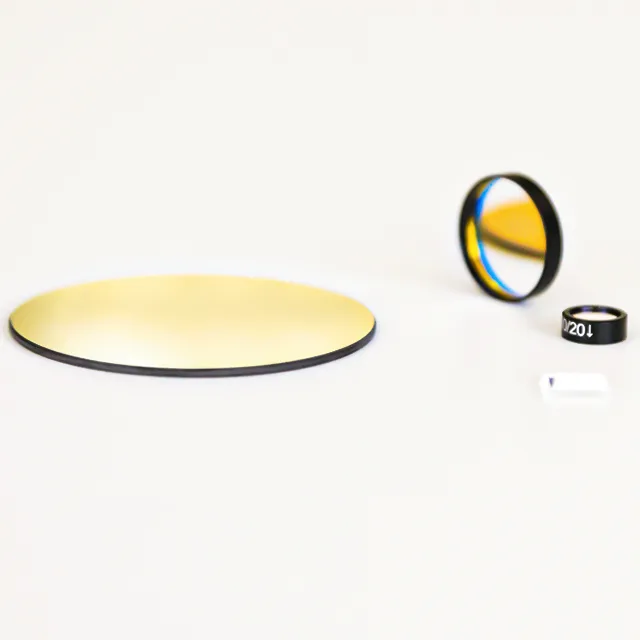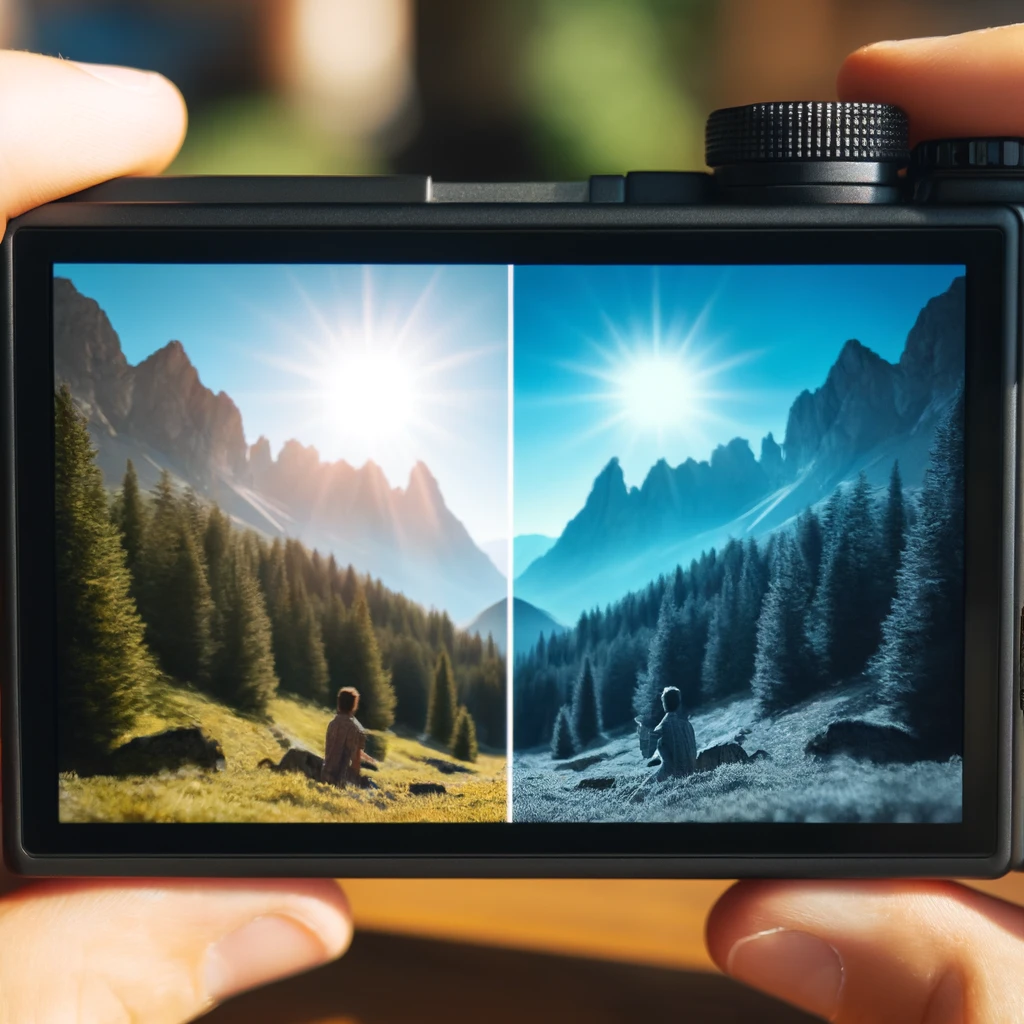Do UV Filters Affect Image Quality?, Yes, but it will affect the image quality depending on the quality of the UV Filters. Usually, high-quality UV Filters have a lower impact. However, if you use a low-quality UV filter, it may Issues such as halos, blur, or color distortion may occur.
This article will explore the role of UV filters in photography, examine their impact on image quality, and weigh the pros and cons of using them under various shooting conditions.
What Are UV Filters?

UV filters are transparent glass or plastic filters that attach to the front of a camera lens. They are designed to block ultraviolet (UV) light, which can cause haze and reduce clarity in photos, especially in film photography. Although digital sensors are less sensitive to UV light, UV filters are still widely used for their protective benefits.
Types of UV Filters
Standard UV Filters: Basic UV filters that block UV light and provide minimal protection against scratches and dust.
Multicoated UV Filters: These filters have multiple layers of anti-reflective coating, which helps reduce reflections and glare, improving image quality.
UV-Haze Filters: Specifically designed to cut through haze in atmospheric conditions, often used in landscape photography.
You can read more about the types of optical filters.
How UV Filters Affect Image Quality

The impact of UV filters on image quality can be subtle or significant, depending on various factors such as the quality of the filter, the shooting conditions, and the type of photography.
1. Optical Clarity and Sharpness
High-quality UV filters, especially those with multiple coatings, are designed to have minimal impact on optical clarity and sharpness. However, lower-quality filters can introduce slight softness and reduce overall image sharpness due to imperfections in the glass or plastic.
Multicoated UV filters are generally preferred for maintaining sharpness, as they reduce reflections and improve light transmission.
2. Reflections and Flare
Adding an additional layer of glass to the front of the lens can increase the risk of reflections and lens flare, particularly when shooting in bright light or against strong light sources. This can lead to unwanted artifacts in the image.
Multicoated filters are more effective at minimizing reflections and flare compared to uncoated or single-coated filters.
3. Color Cast and Contrast
Some UV filters can introduce a slight color cast, often a warm or cool tint, which can alter the color balance of the image. This is more common with lower-quality filters.
High-quality, well-manufactured UV filters typically maintain neutral color balance and contrast, ensuring the image retains its true colors.
4. Ghosting and Internal Reflections
Poor-quality UV filters can cause ghosting, a phenomenon where bright light sources create multiple reflections within the lens, leading to secondary images or bright spots.
Internal reflections between the filter and the lens surface can also degrade image quality, especially in challenging lighting conditions.
Click to learn: What is the use of bandpass filters
The Protective Role of UV Filters
One of the main reasons photographers use UV filters today is to protect their lenses. Lenses are expensive investments, and a UV filter can act as a first line of defense against physical damage.
1. Protection Against Physical Damage
UV filters can protect the front element of the lens from scratches, dust, and dirt. They are particularly useful in environments where the lens is exposed to harsh conditions, such as sandy beaches, dusty trails, or urban streets.
In the event of an impact, a UV filter may shatter, absorbing some of the force and potentially preventing damage to the lens itself.
2. Ease of Cleaning
It is often easier and less risky to clean a UV filter than the front element of the lens. If a filter becomes scratched or dirty beyond cleaning, it is cheaper to replace than a lens.
Pros and Cons of Using UV Filters
While UV filters offer several benefits, they also have some drawbacks that photographers need to consider.
1. Pros
Lens Protection: UV filters provide an additional layer of protection for the lens, safeguarding against scratches, dust, and minor impacts.
Ease of Maintenance: Cleaning a UV filter is generally easier and less risky than cleaning the lens front element.
Reduced Haze: In certain conditions, UV filters can reduce atmospheric haze, enhancing image clarity.
2. Cons
Potential Image Degradation: Lower-quality filters can introduce softness, reflections, flare, and color casts, affecting overall image quality.
Added Complexity: Using a UV filter adds an additional layer of glass, which can complicate optical performance, particularly with wide-angle lenses or in bright light conditions.
Cost: High-quality UV filters can be expensive, and some photographers may question whether the protective benefits justify the investment.
Case Studies and Practical Examples
1. Landscape Photography
In landscape photography, UV filters can help reduce haze, particularly in mountainous or coastal areas where UV light is more prevalent. However, landscape photographers often prioritize image sharpness and detail, so the quality of the UV filter is crucial.
2. Street Photography
Street photographers frequently encounter unpredictable environments and potential hazards such as dust, rain, and accidental impacts. A UV filter can protect the lens, though photographers must be cautious of reflections and flare from artificial lighting.
3. Travel Photography
Travel photographers benefit from the protective aspects of UV filters, as their gear is exposed to a variety of conditions. However, they must balance protection with the potential impact on image quality, especially in diverse lighting scenarios.
4. Portrait Photography
In portrait photography, maintaining image quality is paramount. High-quality UV filters are essential to avoid any degradation in sharpness or color accuracy. Portrait photographers often shoot with fast lenses, where any added glass can affect bokeh and overall image rendition.
Tips for Using UV Filters Effectively
To minimize any potential negative effects of UV filters on image quality, photographers can follow these tips:
1. Invest in High-Quality Filters
Choose UV filters from reputable manufacturers known for their optical quality and durability. Multicoated filters are preferable for reducing reflections and maintaining image clarity.
2. Regular Cleaning
Keep UV filters clean and free from dust, smudges, and fingerprints. Regular cleaning helps maintain optical clarity and prevents unwanted artifacts in images.
3. Use Lens Hoods
Using a lens hood in conjunction with a UV filter can reduce the risk of lens flare and ghosting by blocking stray light from entering the lens.
4. Remove Filters in Challenging Conditions
In situations where maximum image quality is critical, such as in controlled studio environments or when shooting directly into strong light sources, consider removing the UV filter to eliminate any potential impact on the image.
5. Test Before Use
Conduct tests with and without the UV filter to evaluate any differences in image quality. This can help determine if the filter has a noticeable impact and whether its use is justified in specific scenarios.
Conclusion
In summary, the effect of UV filters on image quality largely depends on the quality of the filter and the shooting conditions. Investing in high-quality, multicoated UV filters and using them judiciously can help ensure that photographers reap the protective benefits without compromising on image quality.
If you want to buy high-quality UV filters, you can contact the Optolong filters website to purchase and get an accurate quote.
